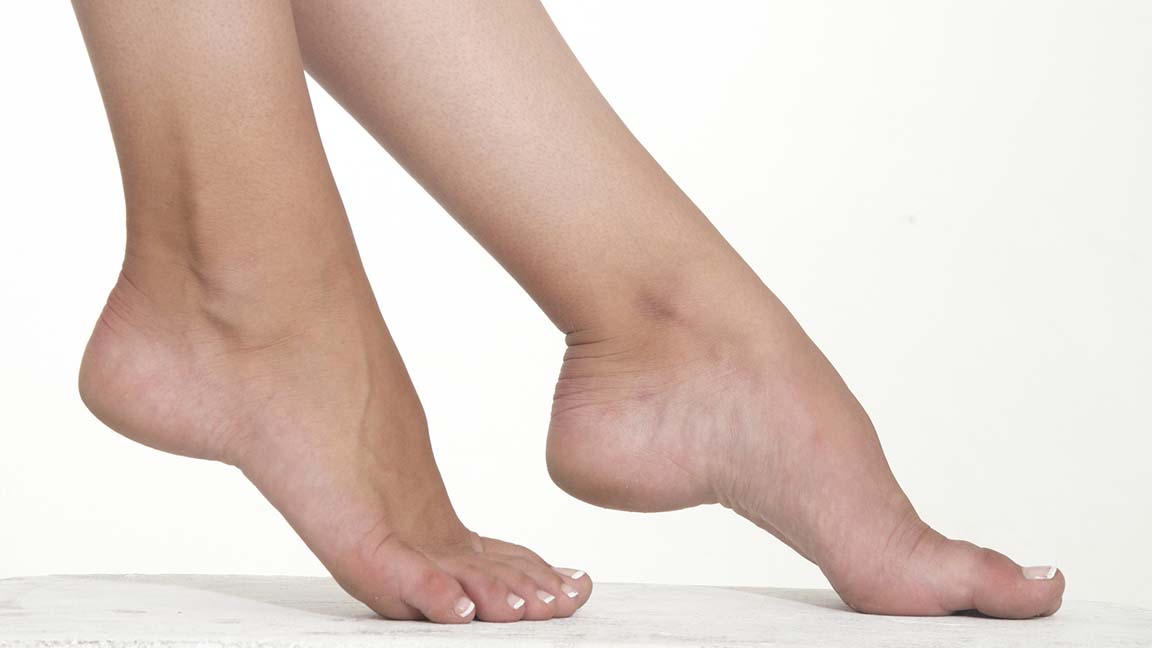If you’re like most people, you probably don’t think much about the bottom of your feet. But that gentle curve that runs between the ball of your foot and heel is vitally important to your body’s mechanics as you walk or run.
By knowing your foot arch type, you can better select footwear, determine whether you need inserts and take other steps to limit foot and ankle pain or other problems.
Three arches
Your foot’s arches are formed by bones and tendons in your foot. There are actually three arches in your feet.
- The medial longitudinal arch runs from the heel to the ball of the foot. It’s the longest and most visible.
- The lateral longitudinal arch runs from the heel through your four and fifth toes. It touches the ground when you stand.
- The transverse arch curves across the top of the foot near the bones in the middle of the foot. It helps create the stiffness you need to walk and stand.
Arches serve many purposes. First, they function as a lever by helping to propel you forward as you use your leg muscles to push off the ground to walk or run.
They also absorb the shock produced by your body as you walk, run or jump. Finally, they help you balance while standing and transition between different types of walking surfaces.
Normal, flat or high arch?
Michelle Sine, a physical therapist at Tideland Health Rehabilitation Services at The Market Common, says the shape and structure of your foot plays a large role in your foot health.
“Depending on how your foot is made, your arch may be normal, high or flat,” says Sine, who specialized in foot and ankle care.
Normal arches allow pressure and weight to be distributed evenly across the foot.
Flat or low arches cause the foot to pronate or roll inward when you walk. This can lead to tendonitis and other issues.
High arches cause you to carry more weight on the balls of your feet and toes, which may cause pain or trouble balancing.
“A high arch is not necessarily abnormal, but it can lead to higher impact when you walk or run. If you have too much pronation, you’re on the other end of the spectrum, and you have a flat foot. The foot is rolling inward too much, and the arch collapses. That can lead to things like tendonitis and plantar fasciitis,” Sine says.
Your arch shape is primarily based on your unique body anatomy, Sine says.
“Some of it is the way your foot was shaped when you were born and the way you developed. You might have acquired a flat foot because of a tendon injury or a bone structural problem that’s developed over time,” she says.
The 'wet test'
An easy way to tell what kind of arch you have is through the “wet test.” It’s a simple method you can do at home.
- Put some water into a shallow dish that’s large enough to fit your foot.
- Put one foot into the water, making sure all areas of the bottom of your foot get wet.
- Remove your foot and step onto a piece of cardboard or flattened brown paper bag. Don’t just put your foot lightly on the cardboard. Be sure to put your full weight on it.
- Take a photo of your footprint.
- Repeat with your other foot.
Interpreting the results
Interpreting the results is fairly straightforward.
- If the middle portion of your foot is roughly halfway filled in along the arch, you have a medium or normal arch.
- If you see only the toes and heel without much in between, you have a high arch.
- If your footprint looks like a complete foot, you have a low arch.
“The wet test doesn’t tell you why, but it gives you a starting point on whether you need a certain type of shoe or insert,” Sine says.
Sine says you can also visit a store that specializes in running shoes. The staff will measure your foot, watch you walk and recommend shoes that match your arch.
When to seek medical advice
If you continue to experience foot pain after getting a high-quality pair of shoes, Sine says to seek advice from a health care provider.
“Make sure you’re not just treating the symptoms of pain,” she says. “Have a health care provider look at your foot if you have ongoing problems to try to address the underlying condition. There are times that it’s best to have a provider look at your foot and get you on the right track.”








